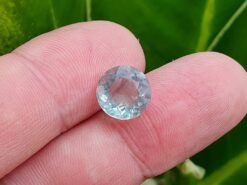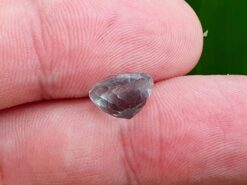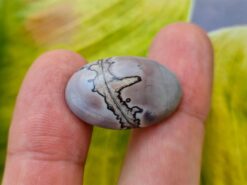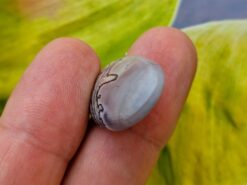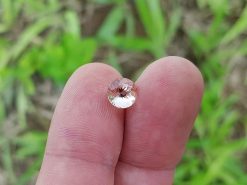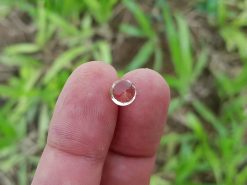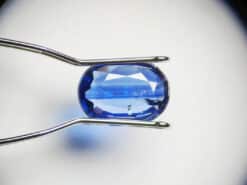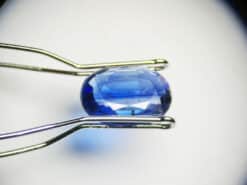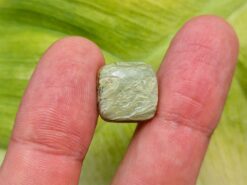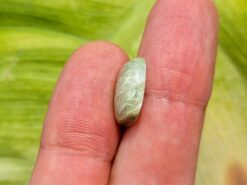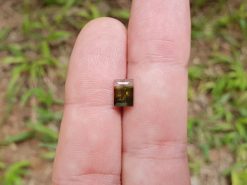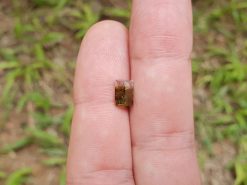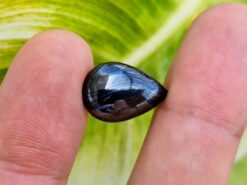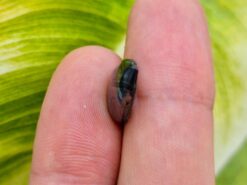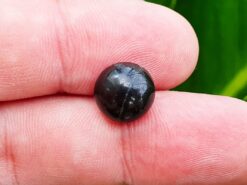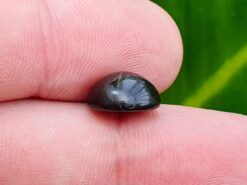Pistachio jasper
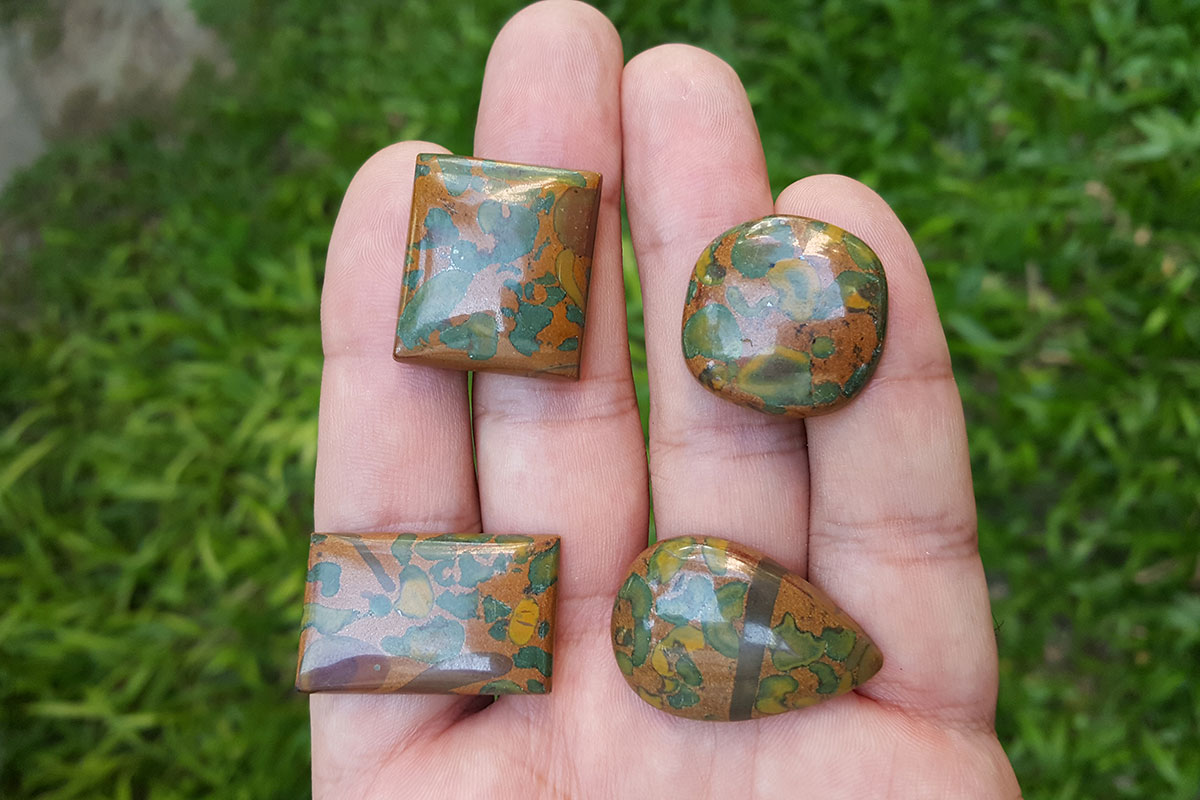
Buy natural gemstones in our shop
Pistachio jasper, an aggregate of microgranular quartz and/or chalcedony and other mineral phases, is an opaque, impure variety of silica. It can be highly polished and is used for vases, seals, and snuff boxes.
The specific gravity of jasper is typically 2.5 to 2.9. Along with heliotrope (bloodstone), jasper (green with red spots) is one of the traditional birthstones for March. Jaspilite is a banded iron formation rock that often has distinctive bands of jasper.
The name means “spotted or speckled stone”, and is derived via Old French jaspre (variant of Anglo-Norman jaspe) and Latin iaspidem (nom. iaspis)
History
Green jasper was used to make bow drills in Mehrgarh between 4th and 5th millennium BC. Jasper is known to have been a favorite gem in the ancient world, its name can be traced back in Arabic, Azerbaijani, Persian, Hebrew, Assyrian, Greek and Latin. On Minoan Crete, jasper was carved to produce seals circa 1800 BC, as evidenced by archaeological recoveries at the palace of Knossos.
Although the term jasper is now restricted to opaque quartz, the ancient iaspis was a stone of considerable translucency including nephrite. The jasper of antiquity was in many cases distinctly green, for it is often compared to the emerald and other green objects. Jasper is referred to in the Nibelungenlied as being clear and green.
The jasper of the ancients probably included stones which would now be classed as chalcedony, and the emerald-like jasper may have been akin to the modern chrysoprase. The Hebrew word yushphah may have designated a green jasper.
Flinders Petrie suggested that the odem, the first stone on the High Priest’s breastplate, was a red jasper, whilst tarshish, the tenth stone, may have been a yellow jasper.
Pistachio Jasper

